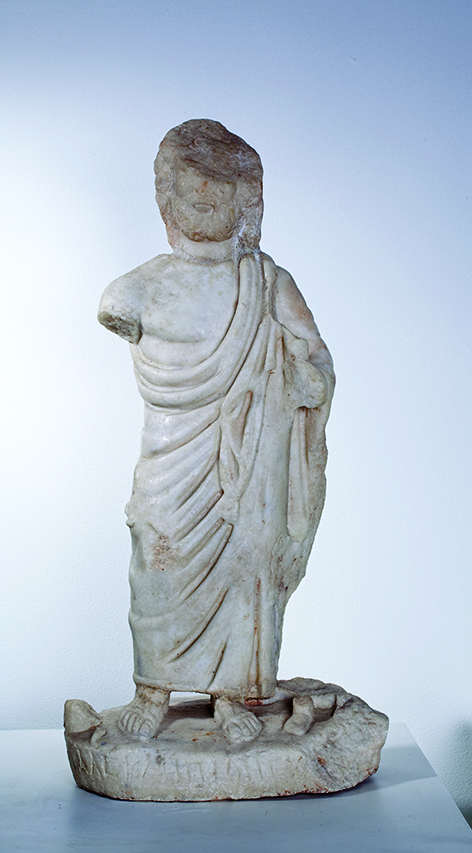
The statue is missing the right arm, left hand and almost whole figure of (only the boy’s right foot is preserved). The figure stands in contrapposto pose, weight of the body is on the left leg while the right leg is bent at the knee and slightly moved behind the left leg. Head of the god, fragmented in the upper face, shows that Asclepius was represented with long hair coming down to his shoulders and short beard, parted in the middle. Small mouth with full lips and partially preserved right eye, point to carefully and realistically modeling of the face features. The god is dressed in a long, pleated himation which does not cover right side of the figure upper torso and his right shoulder. Naked part of the right side of the deity’s upper torso suggests harmoniously shaped body of the god. Sculptural group of Asclepius with his son Telesphoros stands on pedestal with Greek inscription which translation reads: “To Asclepius the Savior, Sim […] a priest.” Although the figure of Telesphoros was not preserved, on the basis of analogous specimens from other regions of the Roman Empire, one can assume that the sculptural group of Asclepius with Telesphoros from Mediana belonged to the widely known iconographic type of representations of Asclepius and Telesphoros where the god is shown as a mature, bearded man who in one hand held a staff with a snake wrapped around it, in the other hand a patera, and at his knee height stood a small figure of Telesphoros a boy, with a hood on his head and with a long cloak. Although representations of Telesphoros as a boy have been known since the 4th century BC, somewhat hybrid representations of Telesphoros (figure of a boy with posture and clothing of an adult person) with the god Asclepius become very common from the 2nd century. Sculptural group of Asclepius with Telesphoros is dated to the first half of the 4th century.

